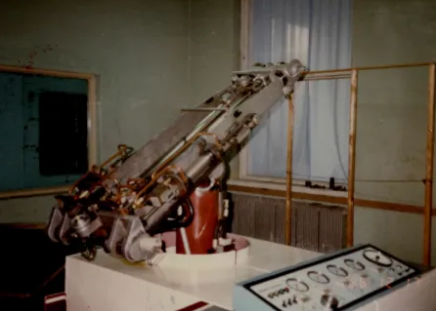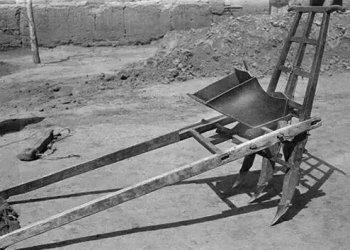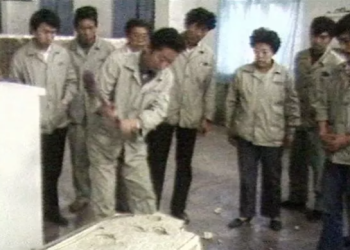“Within the next 15 years, we will not cooperate with China in the field of robotics. Even if we sell robots to you, you won’t be able to use them!”
In August 1979, at the First International Conference on Artificial Intelligence in Tokyo, Japan, the arrogant remark of a technology director from a well-known Japanese enterprise deeply stung China’s scientific community. Jiang Xinsong, director of the Shenyang Institute of Automation, Chinese Academy of Sciences, vowed to win back dignity for China’s robotics industry.
By 2022, China’s annual sales of industrial robots exceeded 300,000 units, accounting for more than half of the world’s total sales, making it the world’s largest industrial robot application market for nine consecutive years. China had achieved the capability of a full industrial chain substitution. None of this would have been possible without the Shenyang Institute of Automation, the “cradle” of China’s robotics industry. At a time when China had little capacity to follow global technological frontiers, a group of pioneers were already envisioning the future of China’s national industry.
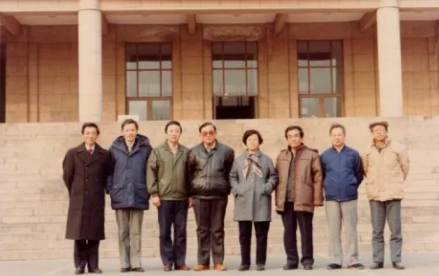
In 1958, the world’s first industrial robot, Unimate, was born in the United States. Its appearance completely transformed modern industry and automobile manufacturing processes. Yet at that time, China’s basic industry was weak and underdeveloped. Many questioned: “What is a robot? If robots become humans, wouldn’t that be absurd? We haven’t even figured out what a robot is, and we already want to build one. Isn’t that wishful thinking?”
Despite skepticism, three scientists from the Shenyang Institute of Automation—Wu Jixian, Jiang Xinsong, and Tan Dalong—held reports titled On Artificial Intelligence and Robots and lobbied for support everywhere, only to meet repeated rejection. They were deeply worried that if China did not act, it would soon fall irreversibly behind.
Finally, in 1977, with the support of leading scientists in China’s automation field—Tu Shancheng, Yang Jiachi, Wang Daheng, and Song Jian—the robot project was officially included in the 1978–1985 Automation Science Development Plan.
In June 1982, inside the laboratory of the Shenyang Institute of Automation, China’s first industrial robot prototype—the SZJ-1 teaching and playback manipulator—took shape. Although it was not yet ready for production use, it completely opened the eyes of the Chinese people and sounded the clarion call for the nation’s industrial robot development.

Two years later, the “Shenyang Robot Demonstration Project” was officially launched with a total investment of 50 million yuan. The institute, living up to expectations, achieved repeated breakthroughs in key areas such as robot controllers and mobile robots. Jiang Xinsong, now the chief scientist of the automation field within the national “863 Program,” was eager to push forward. Yet the user market dealt him a heavy blow: “We do not consider domestic equipment!” Breaking such a deadlock was easier said than done.
The turning point came at an automobile factory in Shenyang. In 1991, the factory decided to import Automated Guided Vehicles (AGVs) from the United States to develop a final assembly line for cars. However, halfway through the project, the U.S. side suddenly announced restrictions on technology exports. At this critical moment, the Shenyang Institute of Automation stepped up. Relying on its accumulated expertise in mobile robotics, it quickly developed a superior AGV and deployed it directly on-site. Its sudden debut forced the price of imported AGVs to fall from 1.5 million yuan per unit to under 1 million yuan. Even more significantly, it attracted the strong interest of South Korea’s Samsung Corporation. The two sides quickly reached an agreement, and for the first time, China’s industrial robots shifted from import dependence to export capability.
Beyond courage, the Shenyang Institute of Automation also displayed daring determination. In 1993, the SISVN-GRC high-performance robot controller was ready. However, delays in the robot body development by collaborating units threatened to leave the controller “without arms or legs.” To prevent setbacks, then deputy director Wang Tiannan decided to purchase 19 robot bodies from Japan, pair them with domestic controllers, and push them into the market for testing. For this, the institute invested all of its own 10 million yuan of funds. Wang admitted later, “If we failed to sell them, the institute might have had to borrow money just to pay salaries.” Jiang Xinsong gave his firm backing: “If we’re buying, then buy in bulk. If we’re doing this, let’s make it earth-shaking!” In the end, all 19 industrial robots were successfully sold.
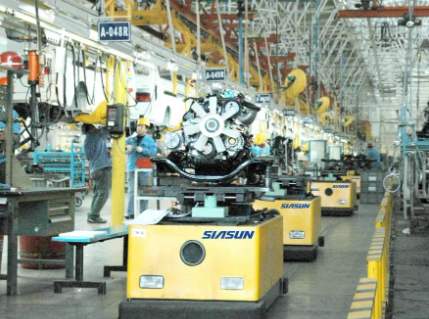
Development, however, was never a straight upward curve. In the final decade of the 20th century, the wave of market economy swept across China, but the once-mighty industrial base of the northeast regressed rather than advanced. The tension between people and robots reached a critical point. This was the necessary pain China had to endure in upgrading its manufacturing industry. Without market demand, there could be no driving force. To address concerns, the Shenyang Institute of Automation even established a marketing department to “teach classes” to government leaders, entrepreneurs, and workers. They presented a clear comparison: Japan had the most robots yet the lowest unemployment rate, while the UK had fewer robots but higher unemployment. Such facts helped ease doubts.
The path toward industrializing robotics in China was destined to be long and arduous. Unfortunately, Jiang Xinsong did not live to see the dream fulfilled.
On March 29, 1997, while on a business trip, he suffered an acute, massive myocardial infarction. After a brief improvement, he returned to work, only for his condition to suddenly worsen the next day. Despite emergency treatment, he passed away at the age of 66.
In April 2000, carrying Jiang Xinsong’s unfulfilled wish, the Shenyang Institute of Automation officially established China’s first high-tech robotics enterprise—Shenyang Siasun Robot & Automation Co., Ltd. This marked the beginning of full-scale industrialization of robotics in China.
In 2001, after China officially joined the World Trade Organization, the domestic industrial market underwent earth-shaking changes. At last, domestic industrial robots met their once-in-a-lifetime historic opportunity.
In 2009, Siasun Robotics was listed on the Shenzhen Stock Exchange’s Growth Enterprise Market under the name of “robot.”
By 2013, China officially became the world’s largest industrial robot application market. Industrial robots finally gained their rightful place, transforming from a “neglected pawn” into the “crown jewel of manufacturing.”
